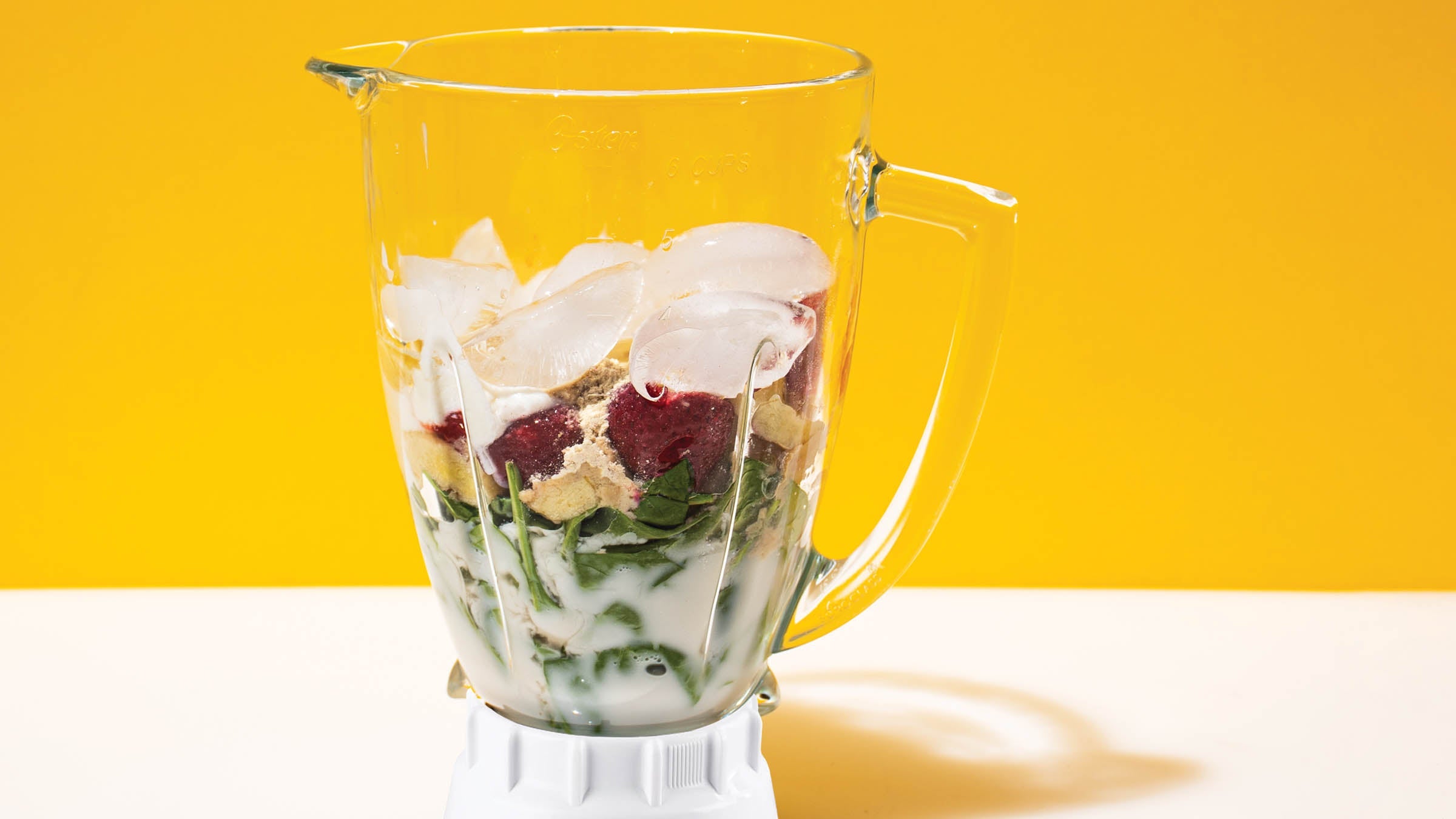If you buy through our links, we may earn an affiliate commission. This supports our mission to get more people active and outside.Learn about Outside Online's affiliate link policy
You’re Probably Making Smoothies All Wrong. Here’s How to Do It Right.

(Photo: Hannah DeWitt)
Smoothies are an easy, foolproof way to pack extra nutrients into your diet—if you know the right way to build them. The order you add your ingredients can affect the taste and texture, but once you’ve got the formula down, you can start mixing and matching. And when solid food is not the move after a hot, sweaty run, smoothies come to the refueling rescue.
“Smoothies are an excellent post-workout option for runners who experience lack of appetite post-workout, as they provide fluids, carbohydrates, and protein all in one,” says Angie Asche, registered dietitian. According to Asche, when we exercise, we experience a decrease in ghrelin, the hormone that makes us feel hungry, and an increase in peptide YY, the hormone responsible for suppressing appetite and making us feel satiated. “Smoothies are a great way for all athletes to get an abundance of nutrients in with little time and effort,” she says.
How to Make the Best Post-Run Smoothie
Here’s how to stack a smoothie for the best texture, flavor, and nutrition.
Start with the Liquid
Measure out 1½ to 2 cups of liquid of your choice: milk, nondairy milk, coconut water. Pouring the liquid first helps lubricate the blades, keeping everything moving for a smoothie that’s thick and mixed throughout. Some nutrition things to remember: cow’s milk often packs the most protein (especially a filtered brand like Fairlife), while coconut water is great for getting in electrolytes.
Then Add the Greens
Go for 2 (packed) cups and you’re well on your way to meeting the daily recommended amount of veggies. “Only 9% of American adults meet the recommended vegetable intakes,” says Asche. Spinach is mild; branching out to kale or collard greens is a great way to mix up the nutrients. “Raw vegetables tend to have a larger amount of antioxidants, and certain nutrients such as vitamin C are destroyed by heat,” she says. “Adding leafy greens to your smoothies can be a simple and efficient way to consume more vegetables.”
Fruit Comes Next
Scoop up 1 to 2 cups. Go frozen here for the best texture, flavor, and for heft: The weight of frozen fruit pushes down the leafy greens, making sure they blend seamlessly. “It will actually be easier for your body to absorb the nutrients from a smoothie because blending will break down the plant cell walls, which can be difficult to digest,” says Asche.
Add Nut Butters or Seeds
Keep these to around 1-2 tablespoons. Nut butters and seeds supply much-needed fats, which help with fullness. Try almond or peanut butters, chia seeds, pistachios, walnuts, or ground flaxseed.
Protein Powder Is Optional
Keep it to 1 scoop. Watch out for sweeteners, which can change the taste significantly and cause GI discomfort. “A general rule of thumb is to aim for at least 15-25 grams of protein,” says Asche. Most protein powders should get you there, but overdoing it can make your smoothie gritty.
Add-Ins
This is where you add 1-2 teaspoons of spices (like cinnamon) and up to ½ cup of Greek yogurt, which is great for supplying protein and making things thick and creamy. Other add-ins Asche likes:
- Cacao powder
- Ground ginger
- Ground turmeric
- Maca powder
- Rolled oats
- Spirulina
Finally, Ice Cubes
Opt for a big handful, around 6 to 7, to help thicken and up the chill factor without diluting flavor. Putting ice on top helps weigh everything down, making sure nothing is left just floating around. Start the blender on low and blend for 30 seconds; increase the speed to high and let it whir until everything is smooth.
Some smoothie troubleshooting tips from Asche:
- If your smoothie is too thick: Add more liquid and blend for an additional 15 seconds.
- If your smoothie is too thin: Add more nut butter, fruit, or avocado to thicken it up. Try not to add more ice, which will end watering down the flavor.
- If your smoothie is too bitter: Sweeten it with additional fresh or frozen bananas, mango, or pineapple.
- If you need to watch blood sugar levels: Choose lower-glycemic fruits, such as blueberries, strawberries, raspberries, blackberries, and cherries, and use less than 1 cup. Use an unsweetened nondairy milk, which does not contain sugar, versus dairy milk or juice, which does. Avocados are another good addition to smoothies, as they provide a creamy texture similar to bananas while keeping the sugar content low.
Ready to get started? Check out these three recipes from Asche’s new cookbook, Fuel Your Body: How to Cook and Eat for Peak Performance.